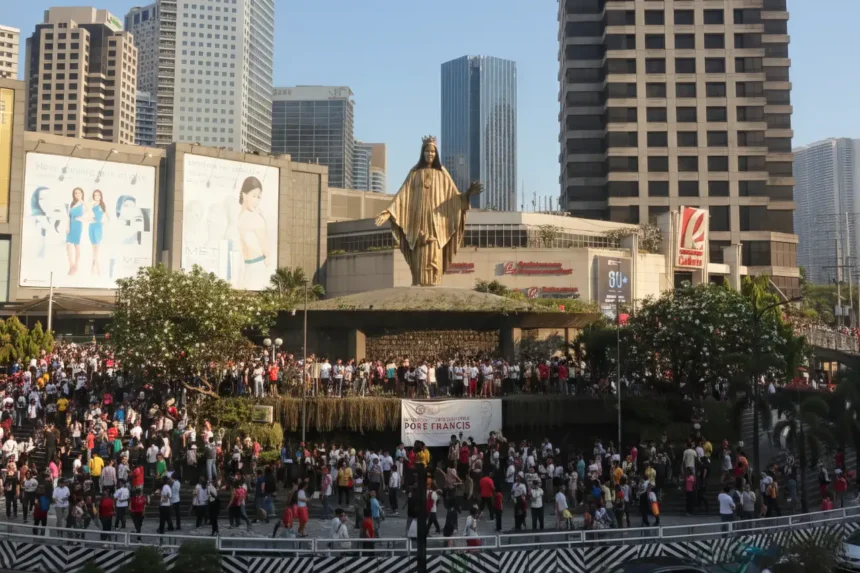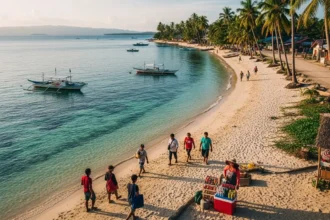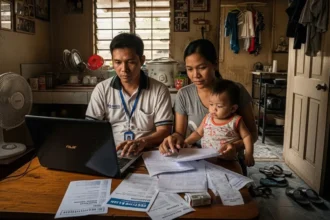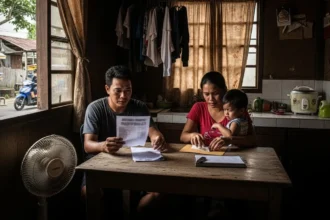If there’s one road in Manila that carries the weight of a nation’s history, it’s EDSA. More than just a traffic-choked highway, EDSA was the stage where millions of Filipinos gathered in 1986 to topple a dictatorship and restore democracy. The event, known worldwide as the EDSA People Power Revolution, inspired movements across the globe and became a symbol of courage, unity, and hope.
Today, some wonder if the “EDSA Spirit” has faded. But for travelers, EDSA remains alive in its landmarks – shrines, monuments, and corners where history was written. Visiting these sites isn’t just sightseeing; it’s walking through the heart of Filipino resilience and democracy.
In this travel guide, we’ll take you through must-see EDSA People Power landmarks in Manila – where to find them, what they represent, and how to explore them meaningfully, whether you’re a first-time visitor or a local rediscovering the city.
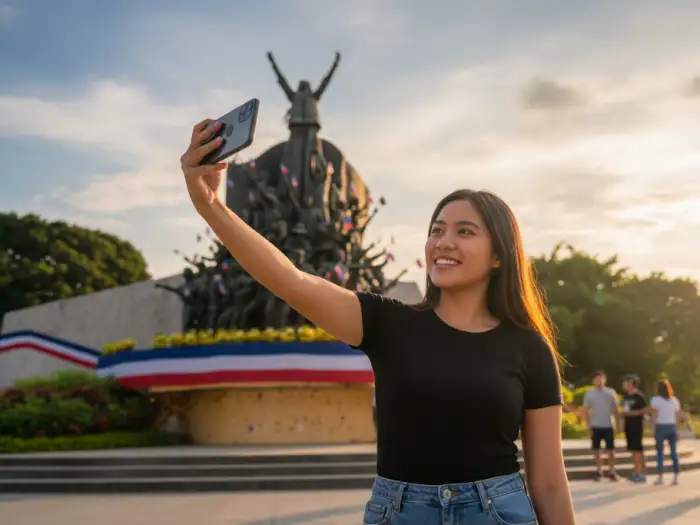
🌟 Why Visit EDSA’s People Power Landmarks?
For most travelers, EDSA is just Manila’s busiest highway – a place of endless traffic and neon billboards. But behind the chaos, EDSA is also where history was written. In February 1986, millions of Filipinos filled this very road to oust a dictator and reclaim democracy. Known worldwide as the EDSA People Power Revolution, it became one of the most peaceful uprisings in history.
🗽 A Living Monument to Unity
Visiting EDSA landmarks means standing on the same ground where civilians, soldiers, priests, nuns, and students linked arms in defiance. It’s not just a story in textbooks – it’s a place where you can still feel the echoes of chants, prayers, and courage that inspired movements around the world.
🎭 More Than Just Politics
EDSA’s sites aren’t only about government and power. They reflect the Filipino spirit: resilience, unity, and faith. The shrines and monuments along the road are cultural symbols – places where generations come together to remember, reflect, and learn.
💸 Accessible to Every Traveler
Best of all, most EDSA People Power landmarks are free to visit. From the towering People Power Monument to the solemn EDSA Shrine, these sites are open to the public year-round. Travelers on any budget can include them in their Manila itinerary.
👉 For first-time visitors, exploring EDSA is not just sightseeing. It’s a chance to understand the soul of modern Filipino democracy, right in the heart of Metro Manila.
🗽 Top Landmarks to See Along EDSA
When people talk about the EDSA People Power Revolution, they often picture crowds filling the highway. But the legacy of 1986 lives on in physical sites that you can still visit today. These landmarks serve as both travel destinations and reminders of the Filipinos’ fight for democracy.
⛪ EDSA Shrine (Shrine of Mary, Queen of Peace)
Built in 1989, the EDSA Shrine marks the very spot where Filipinos gathered to pray and protest during People Power. Today, it stands as both a church and a monument, with its towering image of the Virgin Mary overlooking Ortigas Avenue. Visitors can attend mass, light candles, or simply reflect on the role faith played during the revolution. Entrance is free, but dress modestly if attending services. Google Map Link: https://maps.app.goo.gl/FQzTj5wZ1xjn3xD89
✊ People Power Monument (White Plains, Quezon City)
Located along EDSA near White Plains Avenue, the People Power Monument is a dramatic sculpture of soldiers, nuns, workers, and ordinary Filipinos standing together in defiance. Created by artist Eduardo Castrillo, it captures the essence of unity and courage. Travelers can walk around the site, take photos, and read the commemorative plaques. It’s free and open to the public 24/7, though best visited in the morning or late afternoon when the light makes for striking photos. Google Map Link: https://maps.app.goo.gl/XmEQWhcFVjYafLJ58
🪖 Camp Aguinaldo and Camp Crame Gates
Though not “tourist spots” in the usual sense, these military camps were key to the revolution. It was here that rebel soldiers, led by then-defense minister Juan Ponce Enrile and General Fidel Ramos, defected and were shielded by civilians. While you can’t tour the camps freely, you can view the gates from the outside – still a meaningful stop for travelers tracing the story of EDSA. Google Map Link: https://maps.app.goo.gl/5p3XGfqo32WvBKZb7
🕊️ Ortigas–EDSA Intersection
This busy intersection near Robinsons Galleria was one of the main gathering points during 1986. Today, it looks like any ordinary crossing – cars, malls, and flyovers. But standing here reminds you that ordinary spaces can become extraordinary when filled with people united for a cause. Google Map Link: https://maps.app.goo.gl/Y2PortZZcqaWpaDq5
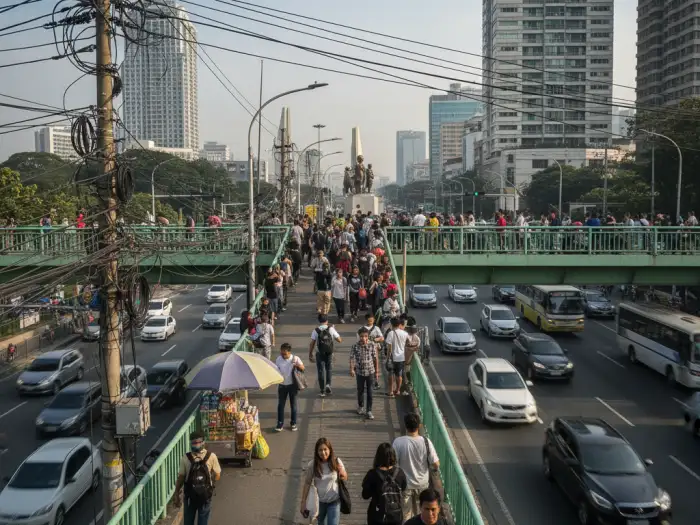
🚶 How to Experience EDSA Like a Traveler
EDSA isn’t your usual travel destination – it’s a living highway, constantly buzzing with buses, cars, and city life. That’s what makes visiting its People Power landmarks both challenging and unique. To get the most out of your trip, here’s everything you need to know:
🗺️ Walking the Route Step by Step
- Start at EDSA Shrine (Ortigas Ave. corner EDSA): Easy to reach by MRT Ortigas or by Grab. This is the heart of the 1986 revolution. Spend 20–30 minutes exploring and reflecting.
- Walk or commute toward Camp Crame & Camp Aguinaldo: Both are visible along EDSA between Ortigas and Santolan MRT stations. You’ll see the gates where soldiers defected and were shielded by civilians.
- Head north to the People Power Monument (near White Plains Ave.): A striking sculpture worth at least 30 minutes. Best seen in the morning or late afternoon for photos.
- Optional stop: The busy Ortigas–EDSA Intersection – now surrounded by malls and flyovers, but still a symbolic space.
💡 Traveler Tip: Sidewalks on EDSA are not designed for leisurely walking. Combine short walks with MRT rides or Grab hops between landmarks.
🚌 Joining a Guided or Themed Tour
Some heritage groups and tour operators offer EDSA-focused tours, especially during February anniversaries. These often combine stops at Intramuros, Rizal Park, and EDSA for a full political-history experience.
- Advantages: You’ll get historical storytelling, insider anecdotes, and safer navigation through traffic-heavy spots.
- Disadvantages: Limited flexibility; tours often stick to a preset route.
💡 Traveler Tip: If no formal tours are available, hire a licensed Manila guide (DOT-accredited) and ask them to build an EDSA itinerary for you.
⏰ Best Times to Visit
- Early Morning (7–10 AM): Cooler, lighter traffic, better photos.
- Late Afternoon (4–6 PM): Dramatic golden-hour shots, but heavier traffic.
- EDSA People Power Anniversary (Feb 22–25): Cultural programs, exhibits, and commemorations. A meaningful time to visit, but be ready for road closures and rerouting.
📸 What to Expect and How to Prepare
- Urban Chaos: Unlike a park or museum, these landmarks sit on one of Asia’s busiest highways. Expect noise, pollution, and fast-moving crowds.
- Short Visits: Each stop takes 15–30 minutes. Bundle them for a half-day heritage itinerary.
- Accessibility: Most monuments are free and open 24/7, but sidewalks and crossings can be tough for seniors or kids.
- Safety: Stick to pedestrian lanes and footbridges. Don’t attempt to cross EDSA at ground level – it’s dangerous.
🧭 Suggested Half-Day Itinerary
- Morning Mass at EDSA Shrine →
- View Camp Aguinaldo & Camp Crame gates →
- Head to People Power Monument for photos and reflection →
- End with lunch at a nearby mall (Robinsons Galleria or SM Megamall).
This mix gives you history, culture, and comfort – all within half a day.
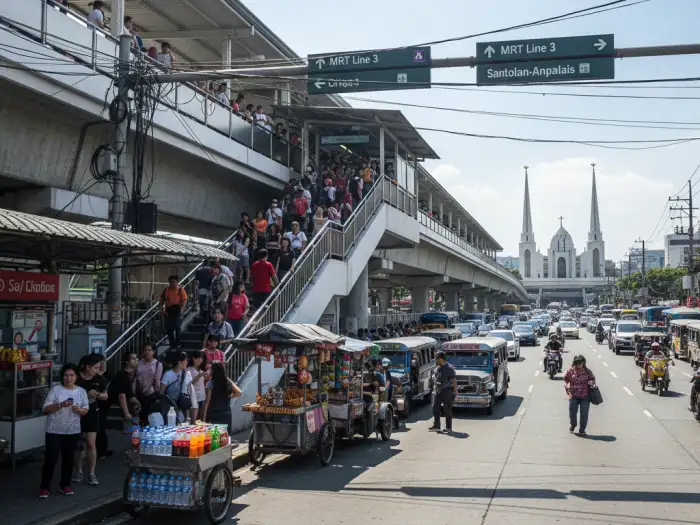
💡 Practical Travel Tips
Visiting EDSA landmarks is less like strolling in a park and more like navigating through a bustling city artery. To make your trip safe, meaningful, and stress-free, here are practical things you need to know:
🚕 Getting There and Around
- By MRT: The fastest way to reach EDSA sites is via the MRT Line 3. Get off at Ortigas Station for the EDSA Shrine and Santolan–Annapolis Station for Camp Aguinaldo and People Power Monument.
- By Grab or Taxi: More convenient if you’re coming from outside Metro Manila. Just set your drop-off to “EDSA Shrine” or “People Power Monument.” Fares vary with traffic, usually ₱200–₱350 from central Manila.
- By Jeepney/Bus: Cheaper (₱15–₱30) but tricky if you’re new to the city; buses and jeepneys stop near Ortigas, Santolan, and White Plains areas.
💡 Traveler Tip: Traffic along EDSA is legendary. If you’re on a tight schedule, ride the MRT or travel early morning before rush hour.
💸 Budgeting for Your Trip
- Entrance Fees: All EDSA landmarks are free – including EDSA Shrine, People Power Monument, and the camp gates (viewing only).
- Transport Costs: ₱50–₱350 depending on your choice of jeepney, MRT, or Grab.
- Food & Rest Stops: Plan around nearby malls (Robinsons Galleria, Shangri-La Plaza, SM Megamall) where meals range from ₱100 (food courts) to ₱500+ (restaurants).
- Souvenirs: None officially tied to People Power, but church stalls may sell candles or religious items.
🛡️ Safety and Comfort
- EDSA is safe to visit during the day, but always stay alert.
- Use pedestrian lanes, footbridges, and MRT walkways; never cross the highway at street level.
- Bring light clothing and comfortable shoes – sidewalks can be uneven.
- Pollution and noise are part of the experience. A face mask or handkerchief may help if you’re sensitive to smog.
💡 Traveler Tip: If visiting with kids or seniors, stick to the Shrine and Monument only – they’re safer and easier to access than trying to cover the whole route on foot.
📸 Photography Tips
- Best Lighting: Morning (7–9 AM) for softer light and fewer crowds; late afternoon (4–6 PM) for golden-hour shots.
- Iconic Shots:
- Wide shot of People Power Monument with EDSA traffic in the background.
- Close-up of the Virgin Mary statue at EDSA Shrine framed against Ortigas skyscrapers.
- Drones: Not recommended – EDSA is a no-fly zone due to traffic and nearby military areas.
- Respect: If attending mass at the Shrine, avoid flash photography inside.
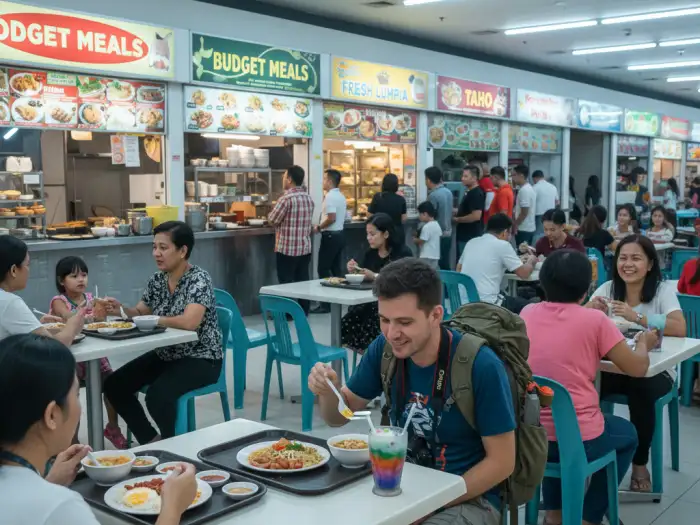
🍴 Where to Eat Nearby
After walking through shrines, monuments, and busy intersections, you’ll want to pause and grab a good meal. Luckily, the EDSA stretch around Ortigas and White Plains is surrounded by malls, carinderias, and coffee shops – offering options for every type of traveler.
🍲 Budget-Friendly Carinderias
- Ortigas Side Streets: Around the back roads near EDSA Shrine, you’ll find small carinderias serving silog meals (tapsilog, longsilog, tocilog) for ₱60–₱100.
- Santolan–Annapolis Area: Near Camp Aguinaldo, locals eat at turo-turo stalls with viands like adobo, sinigang, and pancit. Perfect for those who want an authentic, no-frills meal.
💡 Traveler Tip: Bring small bills (₱20s and ₱50s) – many stalls don’t have change for larger notes.
🥘 Mall Restaurants and Food Courts
- Robinsons Galleria (Ortigas): A short walk from EDSA Shrine. Wide selection from food courts (₱120–₱200 meals) to mid-range restaurants.
- SM Megamall (Mandaluyong side of EDSA): One MRT stop away, with everything from local fast food (Jollibee, Mang Inasal) to international chains.
- Shangri-La Plaza (Shaw Blvd): For a more upscale dining experience. Restaurants serve Filipino and international cuisine, ₱400–₱800 per meal.
💡 Traveler Tip: If you want air-conditioning and comfort after walking in Manila heat, malls are your best bet.
☕ Coffee & Chill Spots
- Coffee Bean & Tea Leaf (EDSA Shrine area): Popular with locals and churchgoers; good for quick breaks.
- Starbucks (Robinsons Galleria, Ortigas): Reliable spot to cool off, charge your phone, and people-watch.
- Local Cafés in Ortigas Center: Independent coffee shops tucked into office buildings offer quieter atmospheres compared to crowded chains.
💡 Traveler Tip: Afternoons are peak coffee time. Visit before lunch or after 5 PM if you want a quieter space.
❓ Frequently Asked Questions About EDSA Landmarks
- Is it worth visiting EDSA as a tourist?
Yes. While EDSA is a busy highway, its landmarks like the EDSA Shrine and People Power Monument offer a unique glimpse into Philippine history. Visiting them gives context to the 1986 People Power Revolution and its impact on democracy worldwide. - Do I need to pay to visit EDSA landmarks?
No. All sites are free to visit, including the EDSA Shrine, People Power Monument, and the gates of Camp Aguinaldo and Camp Crame (viewed from outside). - How do I get to the EDSA Shrine and People Power Monument?
Take the MRT Line 3:- Get off at Ortigas Station for the EDSA Shrine.
- Get off at Santolan–Annapolis Station for Camp Aguinaldo, Camp Crame, and People Power Monument.
Grab and taxis are also widely available.
- Is EDSA safe for travelers?
Yes, especially during the day. Stick to sidewalks, pedestrian lanes, and overpasses. EDSA is very busy, so avoid wandering into traffic or dark alleys at night. - How long should I spend visiting EDSA landmarks?
A half-day is enough to see the Shrine, the Monument, and nearby camp gates. You can combine the trip with mall visits or meals in Ortigas. - When is the best time to visit EDSA landmarks?
Early morning or late afternoon for cooler weather and better photos. For a special experience, visit during the EDSA anniversary (Feb 22–25) when commemorative events are held. - Can I take photos at EDSA landmarks?
Yes. Outdoor sites are open for photography. At EDSA Shrine, be respectful during masses and avoid flash. Drone use is restricted because of traffic and nearby military zones. - What’s the difference between the EDSA Shrine and People Power Monument?
The EDSA Shrine is a church built to commemorate People Power, symbolizing the role of faith. The People Power Monument is a large sculpture of Filipinos standing together, symbolizing unity and courage. Both are essential stops. - Are there guided tours for EDSA landmarks?
Some Manila heritage tours include EDSA stops, especially around the revolution’s anniversary. If not, you can DIY your visit using MRT stops and short Grab rides. - Where can I eat after visiting EDSA landmarks?
Options range from street-side carinderias (₱60–₱100 meals) near Ortigas to mall restaurants in Robinsons Galleria, SM Megamall, and Shangri-La Plaza. Coffee shops like La Cathedral Café aren’t in EDSA but nearby malls have Starbucks and Coffee Bean outlets.
🌏 Standing Where a Nation Once Stood
EDSA may look like just another chaotic highway in Manila, filled with buses, cars, and billboards. But for those who pause and visit its shrines and monuments, the road transforms into something deeper – a living stage of Filipino courage.
Here, millions once stood shoulder to shoulder, armed only with rosaries, prayers, and determination. The EDSA People Power landmarks are more than concrete and bronze; they are reminders that ordinary people can shape the course of history.
For today’s traveler, walking these sites is not only about remembering the past – it’s about understanding the spirit of unity that continues to define the Filipino people. Whether you’re a local rediscovering Manila or a visitor seeing it for the first time, EDSA invites you to step into history and carry its lessons forward.
🧭 References
-
Quezon City Gov – EDSA People Power Monument
-
EDSA Shrine – Pilgrims Activity Guide 2025
-
Philstar Life – Places to Commemorate EDSA People Power Revolution
-
Wikipedia – People Power Monument
-
Philippine Star – EDSA to Celebrate Faith Aspect of People Power
-
Airial Travel – EDSA Shrine Tourist Guide
-
Tripadvisor – EDSA Shrine Reviews & Info



